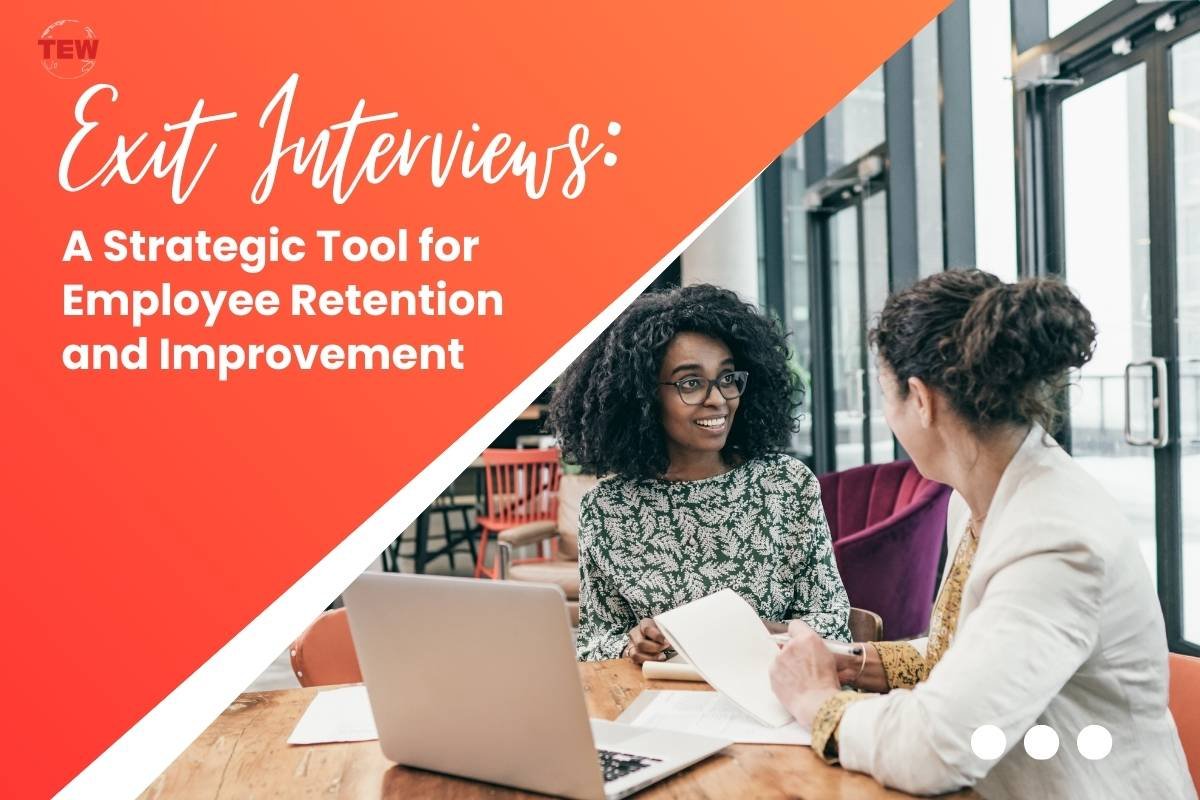Voluntary employee turnover disrupts operations, diminishes profits, and can leave the remaining staff feeling frustrated or demotivated. When talented team members move on, it often signals deeper issues, from lagging professional development to poor cultural fit to ineffective leadership. Conducting enlightening exit interviews transforms departures into strategic opportunities to retain top performers, enhance talent pipelines, strengthen employer branding, and gain competitive advantages.
The Importance of Exit Interviews
Dedicating resources toward thoughtful and empathetic exit interviews generates significant advantages:
1. Identifying Root Causes of Employee Turnover
By providing safe spaces for candid feedback, exit interviews uncover reasons beyond surface level that spur resignations. Recurring themes related to stagnant career paths, uninspiring management, insufficient work-life balance, and more demand closer examination and strategic action.
2. Improving Employee Retention

Analyzing constructive criticisms and suggestions shared during off-boarding meetings allows strengthening problematic areas lowering employee satisfaction and engagement. Better aligning corporate priorities, workplace culture, professional development, and more to rising talent tastes improves present and future retention.
3. Enhancing Employer Branding
Even existing employees can become talent magnets by sharing positive reflections on team spirit, leadership support, workplace amenities, training opportunities, and other attraction differentiators. Their authentic voices reach candidates more powerfully than PR announcements. HR can also call upon them later to participate in recruitment marketing content as credible employer champions.
4. Improving Management Practices
Manager maturity level hugely impacts employee experiences and tenure. By pinpointing leadership approaches causing friction through exit interviews, organizations can provide targeted coaching and skill building to enhance inclusion, communication, work-life balance, inspirational vision casting, and decisive problem-solving.
Deeper investigations into sexism, racism, or harassment exiting staff further identify managers warranting disciplinary action or removal to maintain healthy, equitable cultures.
Exit interview insights make clear the need for updates to policies, procedures, and resource allocations to better support critical roles, from nursing staff to warehouse teams.
Applying continuous improvement mindsets to address weaknesses uncovered transforms employee journeys for the better.
Types of Exit Interviews
HR leaders can choose among interview structures based on preferences, resources, and cultural fit:
1. Structured Exit Interview
The most thorough and insightful option, structured exit interviews, utilize a standard list of questions exploring resignation factors. They allow quantitative and qualitative data analysis to measure progress on targeted retention and brand initiatives over time. Setting consistent participant expectations via structured design yields optimal transparency.
2. Unstructured Exit Interview
As the name suggests, unstructured interviews adopt free-flowing, conversational tones guided primarily by the employee rather than a set questionnaire. This relaxed style encourages openly sharing suggestions, criticisms, experiences, and feelings without inhibition. While qualitative feedback proves extremely valuable, measurement and trend analysis remain challenging.
3. Semi-Structured Exit Interview
Combining elements of organized questionnaires and impromptu discussion, semi-structured exit interviews provide helpful prompts encouraging detailed feedback while still allowing organic exploration of topics. Employees appreciate voicing precisely which components boosted or hindered their tenures while leadership gains structured insights to drive continuous enhancements.
Conducting Effective Exit Interviews

Follow these best practices for maximizing exit interview value for both leaving talent and receiving leadership:
1. Plan and Prepare
Determine ideal timing, duration, and format based on role type, tenure, performance, and departure circumstances. Assess previous responses for priority topics to explore. Craft questions eliciting constructive suggestions phrased conversationally rather than confrontationally. Discuss goals with interviewers and provide coaching as needed on extracting insights.
2. Choose the Right Interviewer
Select unbiased leaders with strong emotional intelligence, analytical abilities, and confidentiality practices. Have interviewers without direct people management duties conduct frontline employee exit interviews to prevent intimidation and censoring feedback. Effective HR business partnership models lend themselves perfectly to the exit interview process.
3. Schedule the Interview
Book exit interview sessions on employees’ last days or shortly before final departures during standard work hours, allowing adequate time for thoughtful dialogue. Confirm that the timing remains sensitive to departure details, from retirement celebrations to resignations prompted by unresolved disputes. Adjust the approach for regretted versus welcomed turnover.
4. Maintain Confidentiality

Promise confidentiality efforts toward submitted feedback to foster honest sharing without fear of workplace retaliation, damaged relationships, or hurt feelings. Deidentify comments before broader distribution to drive organizational changes. Follow strict data privacy protocols regarding storing and accessing exit interview records.
5. Structure the Interview
Greeting participants cordially, briefly explain interview goals, reassure confidentiality protections, and describe the intended uses for the shared information. Quickly build rapport before moving through your sequence of open-ended, nonjudgmental questions grouped logically into categories. Close by summarizing key takeaways and expressing appreciation.
6. Close the Interview
Thank participants for their candor and time spent aiming to enhance workplace experiences for remaining and future staff through shared feedback. Collect any additional thoughts not yet covered. Convey respect regarding choices to pursue new opportunities or work-life balance priorities. Ask permission to follow up for clarification or further input if helpful.
Must-Ask Exit Interview Questions
Pose these must-ask exit interview questions to uncover actionable intelligence:
What motivated you to start looking elsewhere and ultimately leave this company?
Listen for verification or refutation of hypotheses regarding workplace weak spots, unmet needs, cultural misalignment, skill stagnation, and more losing star players. Compare responses with those of staying employees.
Which factors most attracted you to work here originally?
Highlight differentiators that set your employer brand and opportunities apart. Lean into strengths to build magnetic cultures. Look internally to reignite elements that are burning out engagement. Reinforce touchpoints that make favorable first impressions on candidates.
How did your actual employment experiences compare with initial expectations set during hiring?
Gauging promise delivery crosstabs recruiter messaging with onboarding and ongoing career support. Flaws become obvious between incompatible envisioned roles versus realities. Review candidate journey breakthrough moments versus friction points.
What did you like best about your job responsibilities and duties?
Even critics likely found some tasks interesting, such as development accelerating or culture resonating enough to build on. Recognize preferences signaling potential good fits that improperly measured productivity frameworks failed to capture. Match skill aptitudes to project better.
What did you like least? How can those pain points be improved?
Surface irritants dragging down productivity, fulfillment, and collaboration inform smarter system updates, resourcing, staffing models, and technologies that reduce inefficiencies. Assess difficulties through the lenses of preventable growing pains versus endemic cultural weaknesses.
How would you describe the working relationships with your manager and colleagues?
Through firsthand experiences, pinpoint whether toxic individuals, thinly spread managers, poor leadership, or limited team bonding corrode collaborative potentials. Explore any demographic biases harming interpersonal effectiveness.
What suggestions do you have for improving our workplace and culture?
Solicit creative ideas for nurturing employee success, enhancing engagement, smoothing operations, celebrating values, and more. Even seemingly farfetched thoughts occasionally yield fruit by applying design thinking and experimentation. Outside eyes discern legacy constraints needing disruption.
Conclusion
Rather than dreading staff departures, enlightened people analytics teams reframe exits into valuable inflection points for bolstering talent pipelines, updating support programs, realigning teams, confirming differentiators, and becoming employers of choice. They appreciate criticism identifying required culture and policy updates. Tomorrow’s top talent chooses you by continually striving toward organizational excellence, guided by those experiencing shortfalls daily. Conducting exit interviews shifts negative turnover into strategic progress opportunities through gathered insights, wisdom, and ideas.




